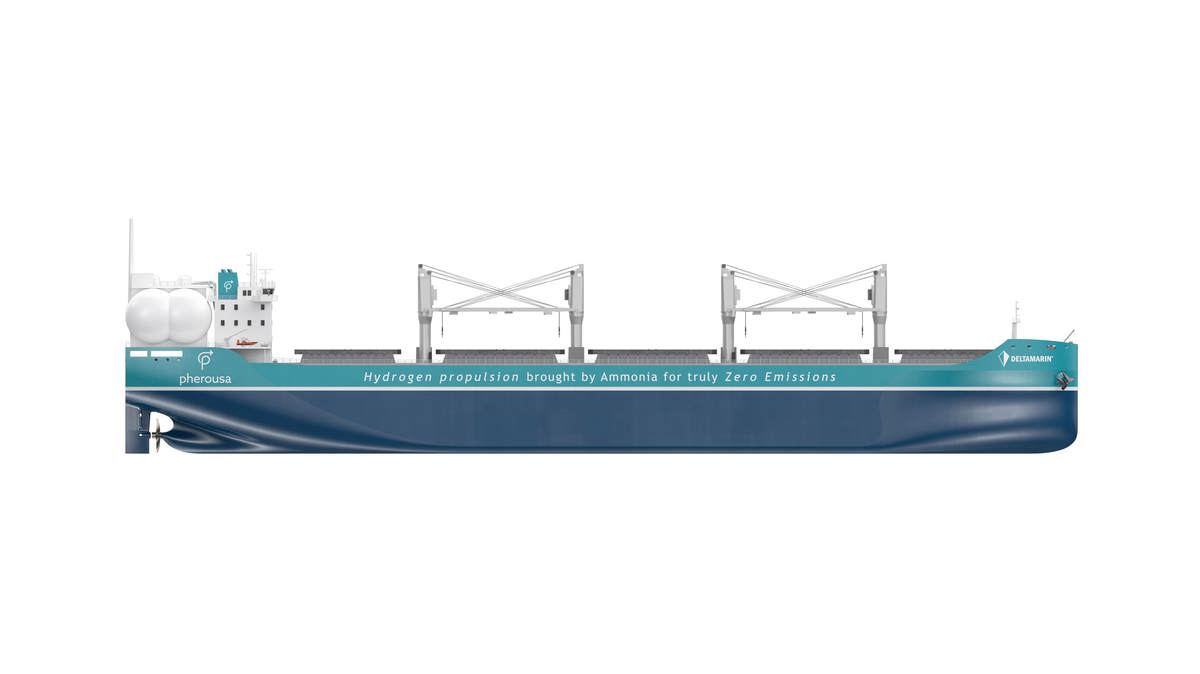Multiple classification societies grant approval to Pherousa’s onboard ammonia cracking tech
Norwegian technology company Pherousa has secured approvals from classification societies ABS and DNV for its onboard ammonia cracking technology.
 PHOTO: Illustration of Pherousa's 64,000-dwt bulk carrier featuring onboard ammonia-to-hydrogen cracking system. Pherousa
PHOTO: Illustration of Pherousa's 64,000-dwt bulk carrier featuring onboard ammonia-to-hydrogen cracking system. Pherousa
The technology enables vessels to generate hydrogen onboard by converting liquid ammonia into hydrogen and nitrogen through a process called "ammonia cracking." The company aims to make zero-emission propulsion viable for maritime transport, from short-sea to deep-sea operations. It sees ammonia as a valuable carrier of clean hydrogen energy, which, if efficiently utilized, could power new types of ship engines.
Pherousa Shipping, a subsidiary of Pherousa, is collaborating with two major copper miners to develop 64,000-dwt bulk carriers equipped with this technology for emission-free copper concentrate transportation. These vessels are expected to be delivered before 2030, when new IMO regulations will mandate at least a 40% reduction in carbon intensity compared to 2008 levels.
The system can integrate with various hydrogen-based technologies, including Proton Exchange Membrane (PEM) fuel cells, ammonia-fuelled engines using hydrogen as a pilot fuel, hydrogen-fuelled engines, and hydrogen-powered auxiliary engines to minimize or eliminate emissions. The company claims that any of these alternatives could be installed on vessels with engine power ranging from 15-20 megawatt (MW).
The project includes key partners such as Finnish ship designer Deltamarin, UK engineering firm Babcock International, and German energy technology company Metacon, which also holds a stake in Pherousa.
By Tuhin Roy
Please get in touch with comments or additional info to news@engine.online





